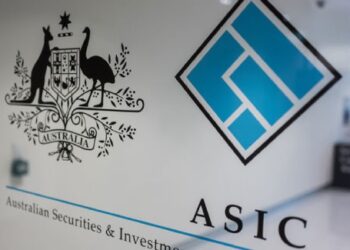Tim Miller, head of education and technical for Smarter SMSF, said in a recent webinar that there has been a subtle and “silent” change from the ATO regarding trustee disqualification.
“I would argue that the ATO, which took over as regulator in 2000 for self-managed super funds, took a fairly educational approach to trustee breaches for the first 20 years of its regulatory position,” Miller said.
“It did disqualify people in the worst scenarios, but what I’m seeing now is a shift over the last few years with far more cases of trustees being disqualified for breaches of many of the investment restriction elements of the SIS Act.”
He said until recently there were only a few cases that went before the courts, such as the Swiss Chalet case, in relation to investment restrictions, but there are now more clients who are “doing the wrong thing and suffering the consequences”.
“From a disqualified person point of view, trustees are being convicted of offences involving dishonesty which have been subject to a civil penalty under the SIS Act. [Disqualification can also occur for] being insolvent under administration – an undischarged bankrupt – or for an SMSF being disqualified by the regulator under Section 126,” he said.
“However, there are opportunities where a trustee can apply for a waiver of a disqualified status, subject to the terms and conditions of that disqualification, but that has to generally be done through the courts, particularly if the trustee has been declared bankrupt.”
Miller continued that a bankruptcy disqualification is usually discharged after three years, but if a trustee wishes to be discharged before then, they have to apply through the federal court and ultimately show why they shouldn’t be a disqualified person under the SIS Act.
He gave the example of the Orel case, where the director of a building company went into liquidation and was declared bankrupt. The director and his wife were also members of an SMSF under a corporate structure.
In the case of Re Orel [2025] FCA 59, the court granted leave to manage a husband and wife’s SMSF corporate trustee where the husband‘s residential construction business, for which he was sole director, was placed into liquidation following COVID-19-related financial difficulties.
As a consequence, the husband was made bankrupt.
The husband was disqualified under the SIS Act due to being an undischarged bankrupt. He was automatically disqualified from managing a corporation under section 206B(3) of the Corporations Act and was a disqualified person under section 120(1)(b) of the Superannuation Industry (Supervision) Act and therefore could not apply for a waiver under section 126K of the SIS Act.
In his application to the court, the husband sought leave to manage the corporate trustee of his and his wife’s SMSF for the benefit of himself and his wife, who had always been the only members of the SMSF. The court inferred in this instance that ASIC did not wish to oppose this application.
Miller said that the court focused primarily on the risk that, as a director of a company, Orel posed a threat to the public from a compliance point of view regarding his SMSF.
“The whole reason for disqualification is about future compliance, and so the court looked at protection of the public, the nature of the disqualification, character and conduct since disqualification, and potential for repetition,” he said.
“It considered things like the fact that Orel had mounting debts and as a consequence the company was placed into liquidation because it couldn’t pay off the debtors. However, he had, at all times, cooperated with the bankruptcy people, the liquidators and all other parties.”
He added that the court then had to consider what the risk to the public would be if Orel remained director of the corporate trustee of the self-managed superannuation fund.
“The fund had assets that consisted of three properties all leased to one unrelated party that was in the middle of its current term with an opportunity to renew that lease in three years,” he said.
“Basically, the court held that there was very little risk in Orel’s actions, because the super fund had never had any compliance issues. It ultimately waived his disqualification status and allowed him to continue on as trustee of the fund.”
Miller concluded that the Orel case serves to highlight that a trustee’s actions, past, present and future, are going to be relevant in the ATO’s decision on whether they will be disqualified.


